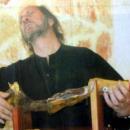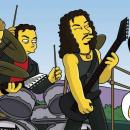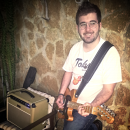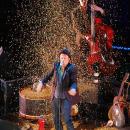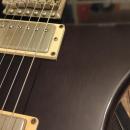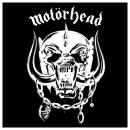He encontrado esto, lo dejo aquí por si puede ser de utilidad para alguien:
Alguien escribió:
Where was my LP made ?
These were/are the main Japanese factories producing the majority of MIJ models (and a few notable Korean subsidiaries):
Asuka (Aska): Bacchus 1994+
Cort, Cor-Tek: (Korea) Greco 1988-199? "no serial" models, Ibanez
Dyna Gakki: Greco, Ibanez
ESP Custom shop: N-LP 280, 380, 480, Kyoto Japan, ESP Korean factories: LTD-1000, LTD-400, Grassroots, ESP Indonesian factories: LTD 250 and lower models
Fujigen Gakki: Ibanez, Greco 1979-1991, Burny (RLC's and some RLG's), ObG 1992-98, Epiphone Japan 1998+, Yamaha , Fender Japan 1981-1997 (1st CNC LP's in 1981)
Hoshino Gakki: Ibanez
Kasuga: Heerby closed early/mid 1990s.
Ida (Lida) Gakki: Ibanez, Peerless factory, Korea.
Nippon Gakki: Yamaha , Aria , Norlin
Matsumoku: (Matsumoto Mokkou) Aria, Burny (1982-86 RLG-150, 120, 90 models), Epiphone1970 - 86, Greco 1970's, Tokai (1980 + 1981 inkies),Westminster, (1st CNC LP's in early '80s)*, Plant closed in 1987
Terada: Orville + ObG (199x - 199x K, L, J serial), Burny (1980-81 FLG-240,150, 90 models) Higashiku factory, Kanie factory + Shirakawa factory
Tokai Gakki: Tokai, Burny FLG (1978),Greco EGC 198?, Grandy (1984-86), Fender Japan, (1st CNC LP's in 1982)*
*Japanese CNC manufacturing accounted for 40% of the guitar making process, 60% of the guitar making process
was still done by hand including planing, fretting, joining, and assembly.
===============================
MIJ models and feature overview:
Bacchus - Momose - Deviser
Bacchus Vintage Series models:
BLS-56-Ltd Ed GT: no tunematic bridge,
BLS-59-120 Gold Top:
BLS-59-120 Lemon Drop:
BLP-59-Live Road Brian (MIK):
BLP-59-Live Road Duke: oiled finish
Bacchus Classic Series models:
BLP-STD-H : Standard plaintop, humbucker pups: BHV-A5(F).BHH(R), Laquer finish,
BLP-STD-M : Mini Humbucker
BLP-STD-FM : Flamed Maple with 1 piece back
BLP-STD-S : P90 style pickup, also comes with Bigsby
BLP-CTM : Custom, Pups: BHV-A5(F).BHH(R) (avail w 3 pups also)
BLP-SP : Special,
BLP-SPDC : Special Double Cut
Burny - Fernandes
FLC - FLG 1975 -1981 "Les Paul model" script
FLC-85 : Custom,
FLC-100: 3 piece back, 2 piece top - center seam, FEB, volute,
FLC-120:
FLG-70 : plain top, CS, BS, GT finishes
FLG-75 : plain top, BL (black) finishes
FLG-80 : plain top, VG, VBS, VCS finishes
FLG-90 : plain top, VOS, VOBS finishes
FLG-100: plain top
FLG-120: plain top
FLG-140: plain top, 1 piece back, plain top, nitro ,
FLG-90 : thin veneer flame top, L8001 pups
FLG-150: 1 piece back , 3/8" thick flame top cap, FEB, nitro finish
FLG-180: 1 piece back, thicker flame top cap, FEB, nitro finish
FLG-240: 1 piece back, solid flame top, FEB, nitro finish
RLC - RLG 1982 - date , no headstock serial #, "Super Grade" script
RLC-60-70-80: Custom, 2 piece solid top , poly finish , BB, CS, BS finishes
RLG-50: 2 piece solid plain top , FEB, poly finish
RLG-60: '56 edition GT, p-90 pups , FEB, poly finish
RLG-90: veneer top, FEB , poly finish,
RLG-120: 1 piece back, 3/8" thick flame top cap, FEB, nitro finish
RLG-150: 1 piece back, thicker flame top cap, FEB, nitro finish
* Specs may vary slightly from manufacturer to manufacturer .
ESP - Edwards *
E-LP70: Two piece back, solid tops, some w double ring tuners
E-LP 85 SD: (now ELP-92) poly
E-LP 90LTS: (now ELP-98) laquer over poly
E-LP 92:
E-LP 98:
E-LP 112/124: basic lacquer, SD1 + SD5 pups
E-LP 124/132: super circuit, lacquer, SD1 + SD5 pups
E-LP 130:
Pure Material : Ltd Ed flame top, 31 produced in 2009
*ESP Edwards guitars began production in 1992, and are manufactured in China,
then reportedly finished and quality control inspected in Japan.
ESP - Navigator
1976 - 1979
ES-12 Standard
ES-13 Custom
1980
LPS 90, LPS 100, LPS 130, LPS 150, LPS 200, Standard
LPC 85, LPC 100 Custom
intro of Espart-LP kits
1981 - 82
LPS 100, LPS 150, LPS 200, LPS 250, LPS 300, LPS 350, Standard
LPC 110, LPC 150 Custom
1983 - 84
LPS 120, LPS 120G (gold top), LPS 250, LPS 350, Standard
LPG 110 (P-90 gold top),LPC 200
1985 - 86
LPS 140G (gold top), LPS 300, LPS 350, Standard
LPC 200 Custom
1987 ~ 2000 Standard white rear covers
LPS 250, LPS 350,
LPC 200 Custom
2000 - 2005
N-LP 280: solid flame top, poly finish
N-LP 350LTD:
N-LP 380LTD: replaced discontinued N-LP 280 ~ 2001, 1pc Honduran mahog backs, SD pups, nitro finish
N-LP 320CTM: Custom
2005 - date
N-LP 480LTD: solid flame tops, 1pc Honduran mahog backs, SD pups
N-LP 580LTD: solid flame tops, 1pc Honduran mahog backs, SD pups
N-LP 380CTM: Custom 1pc Honduran mahog backs, SD pups
N-LP 400CTM: Custom 1pc Honduran mahog backs, SD pups
N-LP 480CTM: Custom 1pc Honduran mahog backs, SD pups
Greco
1971 - 1975 "Gneco" headstock logo. Early '70s Greco LP's had 3 screw TRC's
1975 - 1981 "Greco" headstock logo + closed "O" in Greco
EG-380 - EG 480: Chambered body, UD pickups, multi piece back
EG-500: 3 piece top 1980-81, multi piece back, U-1000 pickups
EG-500 C: Custom, 2 piece top, multipiece back, UD pickups
EG-600: 2 piece top, multipiece back, U-1000 pickups
EG-700: Norlin sandwich type bodies, maple necks + large Head stocks, U-2000 pickups
EG-800: Norlin sandwich type bodies, maple necks + large Head stocks, PU-2 pickups
EG-900: Norlin sandwich type bodies, maple necks + large Head stocks, Dimarzio PAF pickups
EGC-900: Dimarzio PAF pickups
1979 - 1982 Super Real Series * "Super Real" headstock script
*1982 transition Super Reals: Super Real heastock script, but have Mint Collection model attributes, including long tenons.
EG1000 C: Custom, Dry Z pickups, ebony board
EGF-850 : PU-2 pickups, (some with Brazilian fret boards in 1980 only)
EGF-1000: Dimarzio pickups, (Brazilian fret boards in 1979-1980 only)
EGF-1200: Dry Z pickups, all with Brazilian fret boards,
EGF-1800: Dry Z pickups, all with Brazilian fret boards,
EGF-2500: solid Quilt top, limited special order in 1980 only, dry Z pickups.
All models feature FEB, nitro finish,
EGF-1200 - only model with honey burst finish + usually the fattest ('58 profile) necks of all LP replica's.
EGF-1800 - solid flame topped special order models, center seam 2pc back, few 1 pc backs, (lower EGF SR models are all veneer tops)
1982-1995 Mint Collection. open O in "Greco" until mid 1991, no headstock script (except 1982 Super Real).
All feature a long neck tenon, rectangular bell TRC
Models EG59-85 upward, have Nitro finishes.
1982 (and many 1983) models have FEB.
The middle two (xx) numbers in Mint Collection model numbers designate the LP year featured and similar neck profiles,
with 56-58 being thickest and 60 being smallest. Middle numbers include 57,58,59,60, and 68 for Customs only.
EG-xx-450: 2 piece top , heel cap, Screamin pickups
EG-xx-500: 3 piece solid top 1980-82, heel cap, Screamin pickups
EG-xx-600: GT Hot Lick (P-90) or minibucker pickups
EG-xx-650: laminate flametop, Screamin pickups
EG-xx-700: 2 piece top, mild flame, no heel cap, Screamin pickups
EG-xx-850: laminate flametop, Double Trick pickups, CS finish
EG-xx-1000: laminate flametop, DRY-1982 pickups
EG-xx-1200: laminate flametop, DRY-1982 pickups and 50's style necks, some of the EG58-120's
EG-xx-1800: solid flametop, DRY-1982 pickups
EG-59-2400: rare limited editions,feature solid flametops, fatter flamed maple necks, gold hardware, ebony fretboards..
EG-68-800 C - Wine top Tobacco burst, Double Trick pickups
EG-1000D 1989-91 Seymour Duncan pickups.
From 1988-1990 Greco licensed Cort (Korea) to produce no headstock serial # EG models, featuring black plastic fret boards,
angled end (rather than squared end) cavity routs, squared nuts + TRC area bevels.
In mid 1991 Greco returned to the closed O on most Mint Collection models.
Orville - ObG - Epiphone (Japan)
Orville by Gibson - Manufactured for Gibson by
Fujigen - models featured long tenons.
Terrada - models mostly featured medium tenons and K, G or J serial number prefixes
K prefix Orville LPs were produced from 1989 -1993, necks may have Korean style scarf joins.
G prefix ObG LPs were produced from 1989 -1995
J prefix Terada Orvilles began production in 1995 after ObG production ceased,
L - prefix Orvilles are believed to be of non Japanese origin (or possibly fakes.)
G = Gibson pickups (ObG), J+ K = Japan PAF pickups (Orville).
ObG LP Reissues (LPR ) late 1992 to early 1995
- Gibson USA wiring, controls and pickups, nitro finishes, blank TRC, FEB,
Rare, ObG RI flametops are rarer still.
ObG LP Standard (LPS) 1988-1993, no FEB "Standard" on the truss rod cover, but are otherwise identical to the ObG reissues.
ObG flametops are usually laminate, with a few solid flametop examples (LPS-FM 150's and a few re-issues).
Orville - Japanese electrics and Orville PAF pickups, poly finishes
some Orvilles had Photo-flametops, which have identical halves and can look the same as other examples.
In early 1995, Orville by Gibson was discontinued,
Epiphone (Japan)
There were Matsumoku made Epiphone badged LP's produced in very low numbers in 1982 and possibly later, until Matsumoku closed in 1987. They are very similar to Matsumoku produced
Burny RLG's from 1985 + 1986. Controversy remains as to whether they were licensed products or not, but there is no doubt about their build origins.
In 1998 Orvilles were re-branded Epiphone by Gibson (Japan).
Japanese Epiphones are identical to Orville's but with an Epi headstock inlay.
There were no replacements for Orville by Gibson models.
Early Epiphone Japan serials are the same as the last Orvilles, with no letter serial # prefix from Fujigen and J letter serial # prefixes from Terada.
For later Epiphone Japan serials, Fujigen started using F letter serial # prefixes at the same time Terada started using T letter serial # prefixes.
Elite/Elitist series Japan Epis were introduced in 2002
Export Epi Elite models featured tombstone headtocks in place of Japan domestic open book headstocks.
Lacquer series models were introduced around 2005 and Epi Japan LP production ended several years later.
Tokai
1978-1985
All Japan made models have 7 digit numeric serial numbers. with the 1st number(s) indicating model year.
There are 3 different headstock scripts:
"Les Paul Reborn" - 1978-early 1980
"Reborn Old" - early to late 1980
"Love Rock" - late 1980 to Date
There are 3 different TRC styles:
Bell shaped TRC - 1978-1980 (some re-appeared in 1983-1984)
Pointed Bell TRC - 1981 - mid 1998
Arch shaped TRC - mid 1998 - date
LC-60: 2 piece top,2 piece back, poly finish
LC-100: 1 piece mahogany top,1 piece back, nitro finish, 2 pickups
LC-110: 1 piece mahogany top,1 piece back, nitro finish, 3 pickups
LS-50: 3 piece top, multi piece back, poly finish
LS-60: 2 piece top,2 piece back, poly finish
LS-80: Gotoh 57 PAF pickups
LS-100: dimarzio pickups
LS-120: veneer flametop
LS-150: solid flametop
LS-200: special order model
All LS-80 to LS-200 models feature nitro finish, 1 piece backs, 18* heastock angle, FEB to 1983
Tokai models did not begin using inflation corrected higher model numbers until the LS-55 in 1985.
LS-70 GT + LS-75 GT limited edition models were introduced in 1981
Current production line:
As of 2011, models below LS-92 are no longer made in Japan.
ALS prefix models are made in China (ALS-47, ALS-48, ALS-53 etc)
current MIJ models:
LS-92: plain top, 2 piece back, long tenon, poly finish
LS-98: veneer flame top, 2 piece back, long tenon, poly finish
LS-140 F:veneer flame top, 2 piece back, long tenon, lacquer
LS-160: plain top, 1 piece back, long tenon, US electrics, lacquer
LS-165 S: GT, P-90s, 1 piece back, long tenon, US electrics, lacquer
LS-260: solid flame top, 1 piece back, long tenon, US electrics, lacquer
LS-420: LS-260 specs but with Brazilian fret board, higher grade flame top
LS-540: LS-420 specs + Honduran mahogany back + premium flame top
LC-98: Wine red + BB finish, 2 piece back, long tenon, poly
LC-195 S: BB,ebony fretboard, 1 piece back, long tenon, US electrics, lacquer
LC-200: as above in Wine red finish
=====================================
2010 and newer Greco and Burny models often have a "5" last digit in the model number, with models below xx-85 usually made in China.
These generally do not have open book headstock shapes.




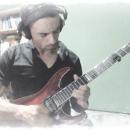
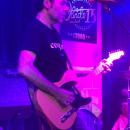
 Pero vamos, si ya tienes esto previsto y no tienes que pagar aduana, yendo allí te puedes conseguir alguna cosita interesante a buen precio.
Pero vamos, si ya tienes esto previsto y no tienes que pagar aduana, yendo allí te puedes conseguir alguna cosita interesante a buen precio. 